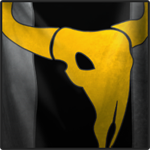A Tank is a Tank and a Mech is a Mech.
Or are they?
The following is a direct copy paste from Wikipedia Under Tank-Destroyer.
Dedicated anti-tank vehicles made their first major appearance in the Second World War as combatants developed effective armored vehicles and tactics. Some were little more than stopgap solutions, mounting an anti-tank gun on a tracked vehicle to give mobility, while others were more sophisticated designs. An example of the development of tank destroyer technology throughout the war are the Marder III and Hetzer vehicle, that were very different in spite of being based on the same chassis: Marder was straightforwardly an anti-tank gun on tracks whereas Hetzer traded some firepower (its Pak 39, designed to operate within the confines of a fully armored fighting compartment, fires the same projectiles from a reduced propellant charge compared to Marder's Pak 40) for better armor protection and ease of concealment on the battlefield.
Except for most American designs, tank destroyers were all turretless and had fixed or casemate superstructures. When a tank destroyer was used against enemy tanks from a defensive position such as by ambush, the common lack of a rotating turret was not particularly critical while the lower silhouette was highly desirable. The turretless design allowed accommodation of a more powerful gun, typically a dedicated anti-tank gun (in lieu of a regular tank's general purpose main gun that fired both anti-tank and high explosive ammunition) that had a longer barrel than could be mounted in a turreted tank on the same chassis. The lack of a turret also increased the vehicle's internal volume, allowing for increased ammunition stowage and crew comfort.[2] Eliminating the turret also allowed the vehicle to carry thicker armor than would otherwise be the case, and also allowed this armour to be concentrated in the hull. Sometimes there was no armored roof (only a weather cover) to keep the overall weight down to the limit that the chassis could bear. The absence of a turret also meant that tank destroyers could be manufactured significantly cheaper, faster and more easily than the tanks on which they were based and found particular favor when production resources were lacking. After hard lessons early in the war, machine guns were mounted for use against infantry but the limited traverse of the mounting meant that they were still less effective than those used on turreted tanks.
OK, now reread that and replace the word Mech in every place you see Tank.
Done?
That is how I see the Nova/Blackhawk.
Not a Tank/Mech, but a Tank/Mech Destroyer.
Firepower of a Heavy, Speed of a Heavy, Weight of a Medium, Five JJ give it amazing agility, but with some substantial Handicaps.
And if I recall from Sarna, (Can not find were I read it.) This was so well designed they
Nerfed it in the TableTop game. High Repair Costs.
However, the number of Novas has been diminishing. Only spare parts have been in production since 2921. Designed as an early OmniMech by Clan Hell's Horses, the Nova was produced at the famous Tokasha Mechworks beginning in 2870. However, after Tokasha was taken by Clan Ghost Bear during the Battle of Tokasha, production of the Nova ceased.
I can not find the reference to the Nova being nerfed with a high repair cost because it is a no longer produced 200 year old design.
This is the variety I see some Posters demanding.
But if PGI's version has a Turret, then to my mind it is just another 50 tonner.
A Turret on this does nothing to improve it without totally breaking it.

Lemonade from a Lemon you say.
Pure Gold Mech-Destroyer, I say.
 3Xtr3m3, on 14 August 2013 - 03:31 PM, said:
3Xtr3m3, on 14 August 2013 - 03:31 PM, said:
 This topic is locked
This topic is locked























